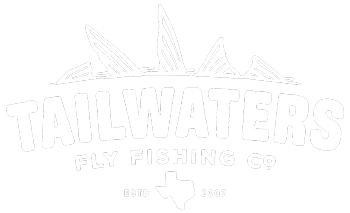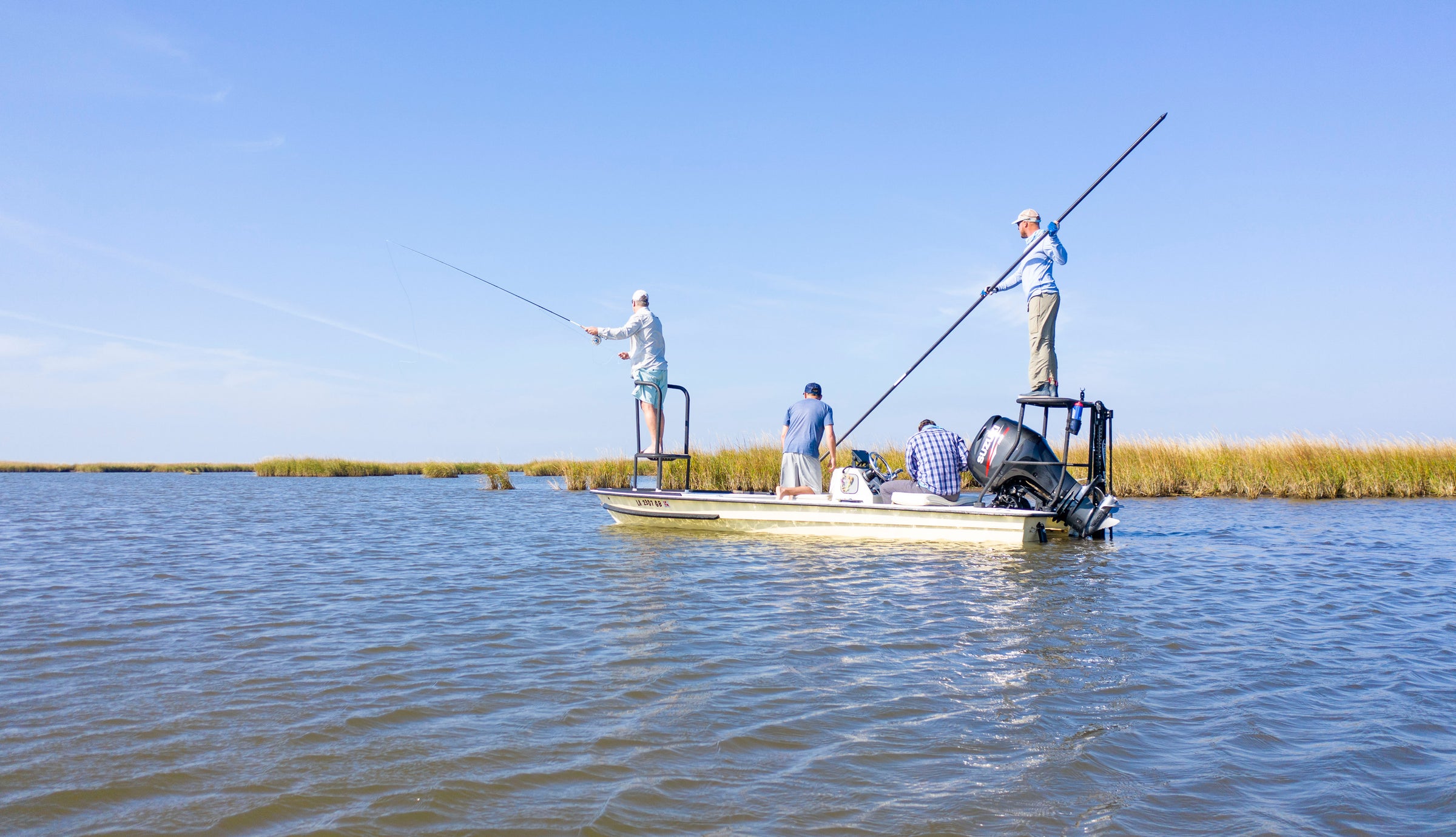
louisiana redfish
woodland plantation
Pre-Trip Planner
Commonly asked questions
This pre-trip planner & outfitting guide is your go-to resource for questions about your trip from now until you
return home safely. It is loaded with information about travel, lodge policy, sample itinerary, and of course lots of
clothing, gear, and tackle recommendations. Feel free to contact us anytime with questions or concerns, but know
this is a great reference to keep handy.
LOCATION
The Woodland Plantation is located on Highway 23 in Plaquemines Parish, Louisiana approximately 1 hour from the New Orleans International Airport.
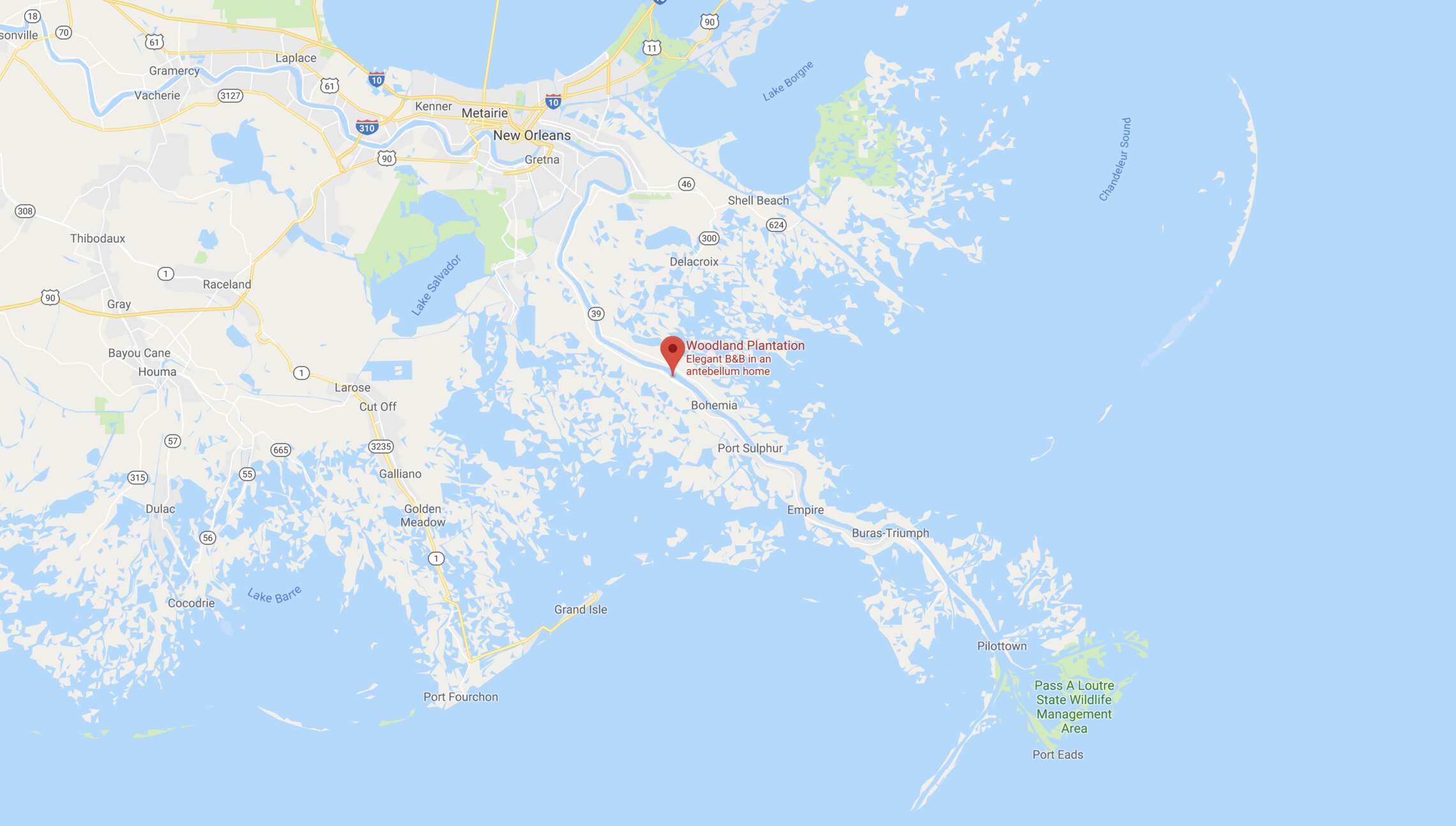
Communications
WOODLAND PLANTATION
21997 Highway 23
West Point a La Hache, LA 70083
Foster Creppel (owner): (800) 231-1514 or (504) 656-9990
GROUND TRANSPORTATION SERVICES
Darin LeCount: (601) 513-7800
Limolivery: (504) 561-8777
Purchasing a Fishing License
Everyone must purchase a fishing license before arrival. Navigate to the link below and follow navigation to the recreational fishing license sales page. You can also call the Louisiana Department of Wildlife & Fisheries directly, however we have found this process to be somewhat tedious. Please refer to page #16 of this pre-trip planner
for more information about obtaining the proper fishing license.
You will want to purchase a “NS/NR Charter Passenger” License for $20.00. Charter pass licenses are sold as 1-Day and 3-Day licenses.
Louisiana Department of Wildlife & Fisheries: (888) 765-2602
Directions to Woodland Plantation
» We have provided very detailed driving directions to the Plantation from the airport in this pre-trip planner. »
GRATUITIES
We recommend around approximately $100-$120 per boat/per day ($50-$60 per person/per day when sharing a guide). If you are fishing solo you should plan on $100-$120. See Page #15 for more information about gratuities including how to tip spin fishing guides, the staff at Woodland and drivers.
ALCOHOLIC BEVERAGES
The Woodland Plantation bar is well stocked with every liquor imaginable and numerous wines in the cellar. Liquor, beer and drink setups are not included in your package price. Individual tabs are kept, and you can check on your tab at any time during your stay. Again, we recommend a standard 15-20% Gratuity on your bar tab for your waiters and waitresses.
LOANER EQUIPMENT
The Woodland Plantation does not provide any fishing gear for guests. With enough advance notice our guides can provide fly rods and reels as well as spinning gear if required at no additional charge.
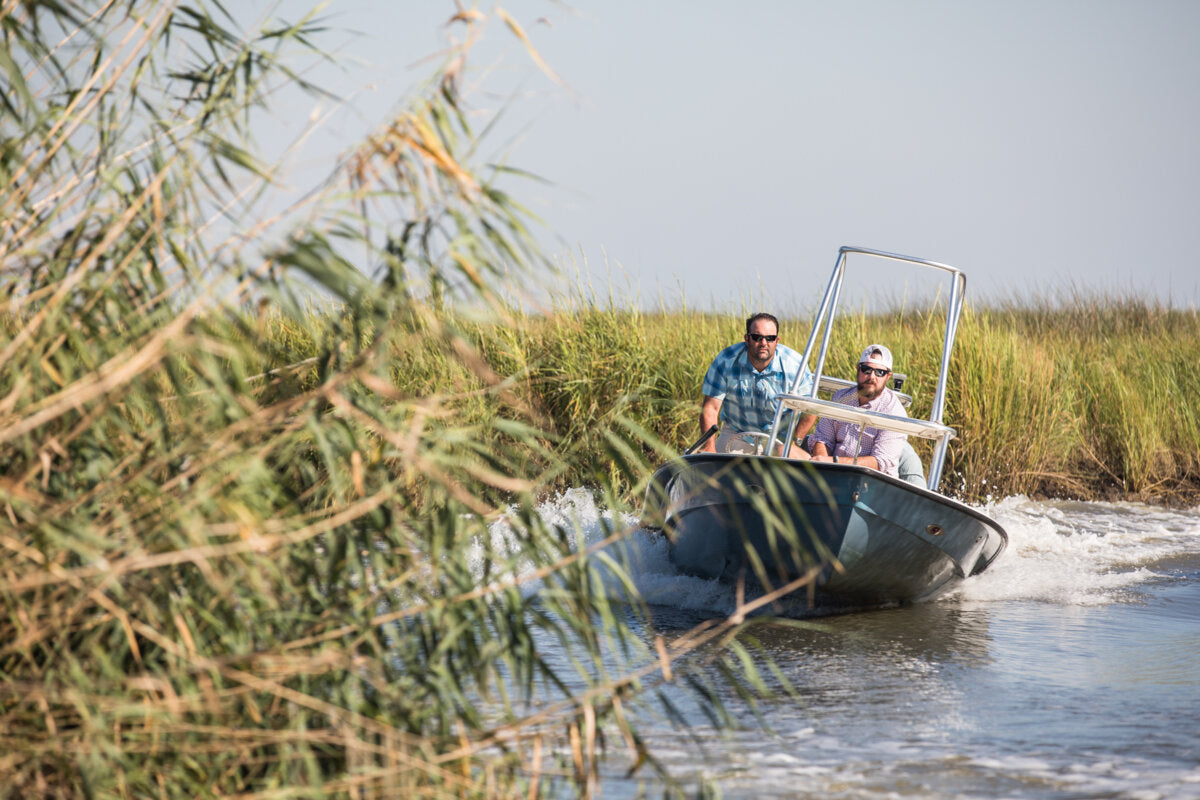
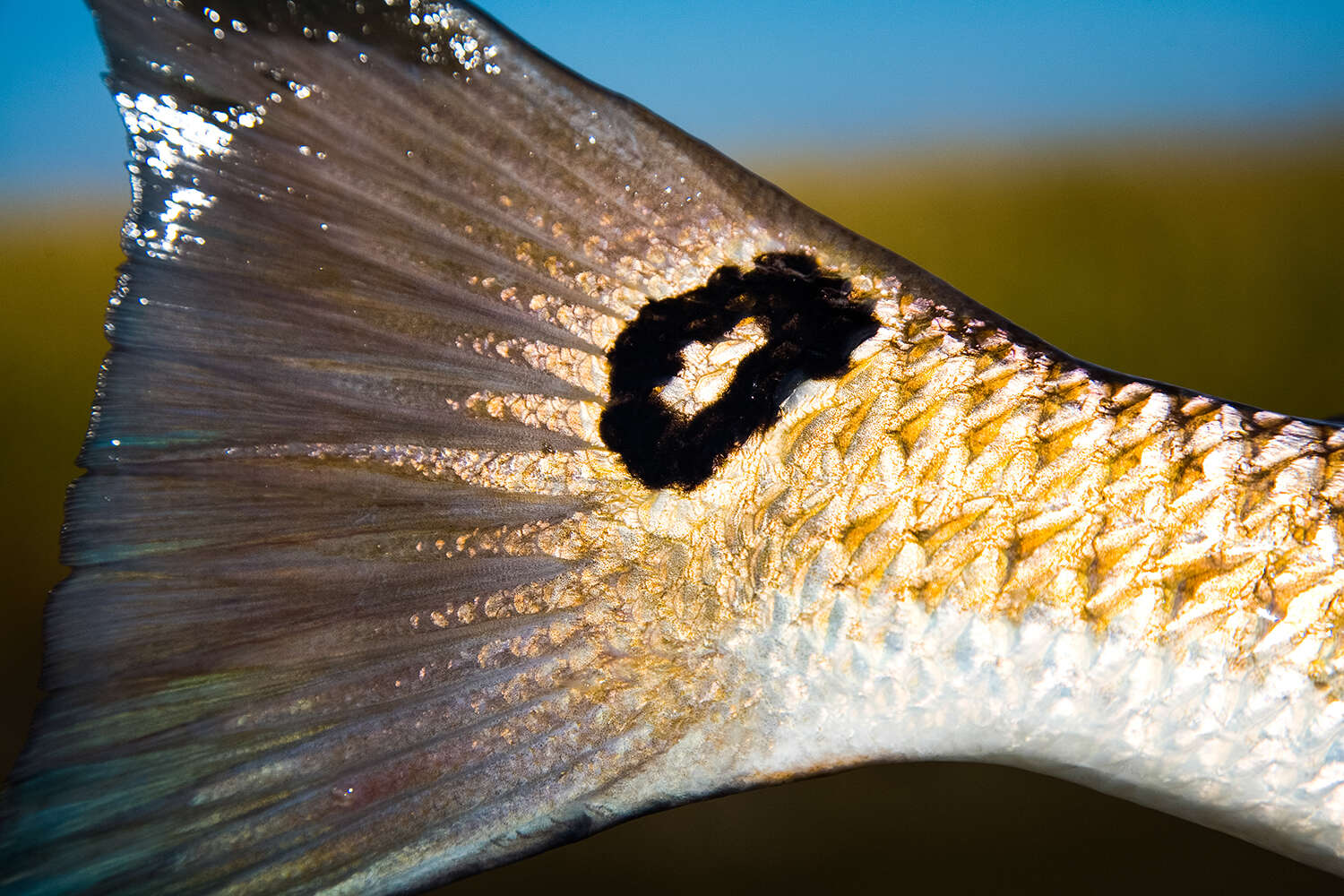
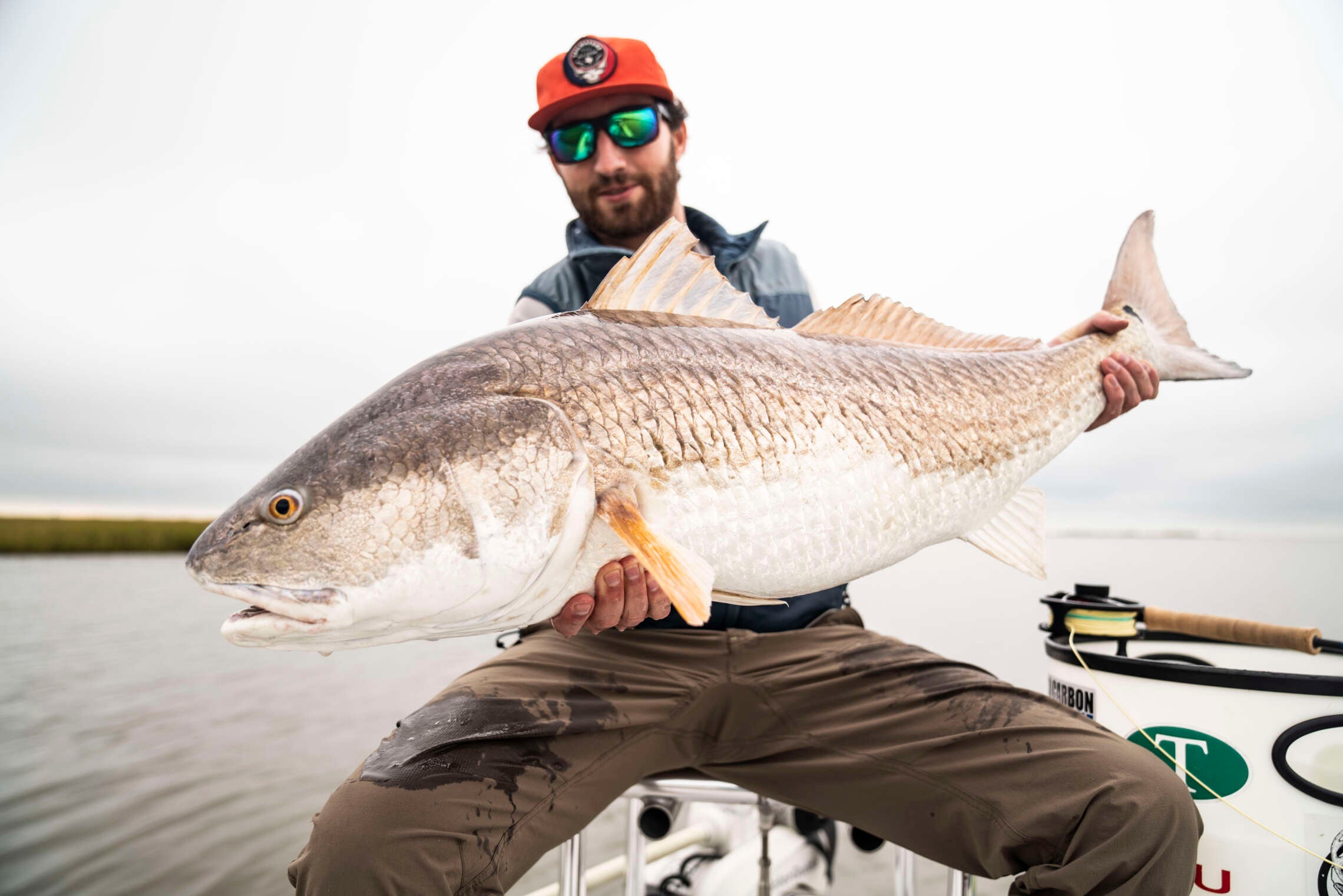
Travel Information
BOOKING AIRFARE TO NEW ORLEANS, LA. (MSY)
Now is also the time to secure your commercial airline reservations to/from New Orleans. You will need to make
these arrangements on your own, however of course feel free to contact us with any questions or concerns about
your specific itinerary before you make any purchases.
New Orleans is serviced daily by nearly every airline with multiple flights daily to/from all major U.S. cities.
Southwest Airlines & United Airlines are most often the carriers of choice for anglers traveling from Texas or other
surrounding states. There are multiple non-stop flights from Dallas (Love Field) with Southwest Airlines as well
as Dallas / Ft. Worth International (DFW) with American Airlines. There are also direct flights with United Airlines
and Southwest Airlines from Houston (IAH).
PRIVATE AIRCRAFT
The closest airport with FBO services is Lakefront Airport. It is not much closer to the Plantation than New
Orleans International, but is the preferred airport for private aircraft.
NEW ORLEANS LAKEFRONT AIRPORT
6001 Stars & Stripes Blvd., Suite 219
New Orleans, LA 70126
Telephone: 504-243-4010
E-mail: info@lakefrontairport.com
www.lakefrontairport.com
ARRIVAL AND DEPARTURE SCHEDULES
When booking your commercial flights to/from New Orleans there is a schedule that you must adhere to. Adhere to
the following flight parameters to guarantee enjoying dinner upon arrival at the Plantation, as well as maximizing
your fishing time on the day of departure if you choose to travel home following your last day of fishing.
ARRIVAL DAY
Guests are instructed to arrive into New Orleans no later than 5:00PM if you intend to have dinner (included
in your trip package) at the Woodland Plantation. Dinner is included at the Woodland Plantation upon arrival –
usually served around 7:30PM. You will want to plan your flight schedule to allow ample time to grab your rental
car or driver and make the hour drive down. If you are planning on arriving later please let us know and we can
make alternative arrangements for dinner that night.
IF YOU ARE FISHING ON DEPARTURE DAY
Guests must plan for a scheduled departure from New Orleans NO EARLIER THAN 7:30-8:00PM to enjoy a full
fishing day prior to returning home. If you plan on leaving New Orleans on an earlier flight, know that you will
likely be required to quit fishing a few hours early on your last day. Finally, if you are interested in a more leisurely
schedule, we recommend spending the night at the Woodland following your last day of fishing.
IF YOU ARE NOT FISHING ON DEPARTURE DAY
Check out from Woodland Plantation is 12:00pm.
GROUND TRANSFERS
There are two ways to make the trip down to/from the airport and the Woodland Plantation:
RENTAL CARS
Most anglers prefer to rent their own car. Car rental weekend rates are usually around $50-$70 per day for a mid sized sedan. We recommend Enterprise as the most affordable car rental company at the New Orleans Airport. Detailed driving directions are enclosed.
PRIVATE DRIVERS
Depending on the number of people in your party, ground transfers can provided in a comfortable sedan, SUV, van, or stretched limo. We have relationships with two private driver providers that provide affordable and reliable transfers to/from the Plantation, downtown New Orleans, and the airport. Private Drivers range in cost from $140 - $250 one way for up to six passengers in an extended SUV or sedan.
IMPORTANT NOTES ABOUT RENTAL CARS VERSUS PRIVATE DRIVERS:
SPIN FISHING CHARTERS FROM VENICE
All anglers who are booked with spin fishing guides out of Venice are instructed to meet at the Cypress Cove Marina each morning. All spin fishing guides live downriver close to Venice and will not come up the road each day to pick up at Woodland. For that reason, all spin fishing anglers must have a rental car to drive to/from Venice. Your guides will provide you with more instruction and timing, however driving directions from Woodland to the Cypress Cove Marina are enclosed.
FLY FISHING ON THE EAST SIDE – TAKING THE FERRY
During the Spring and Summer months there can be times when you guide would rather meet anglers on the east side of the river. This involves taking a ferry across the Mississippi from the west bank to the east side at West Pointe a la Hache – approximately one mile south of Woodland on Highway 23. Guides will often request anglers take their own vehicle to the east side to meet them to save time and get you on the water sooner.
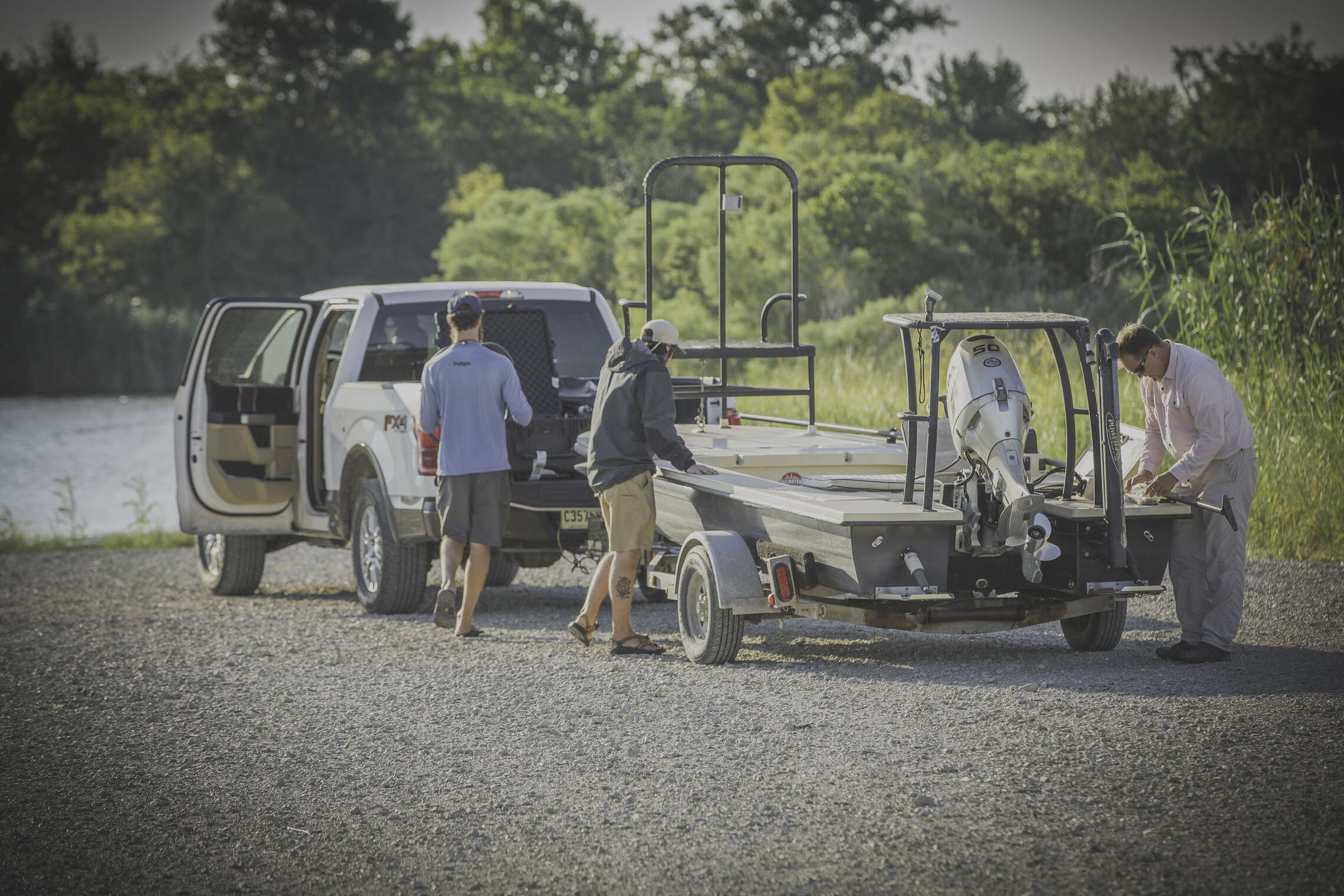
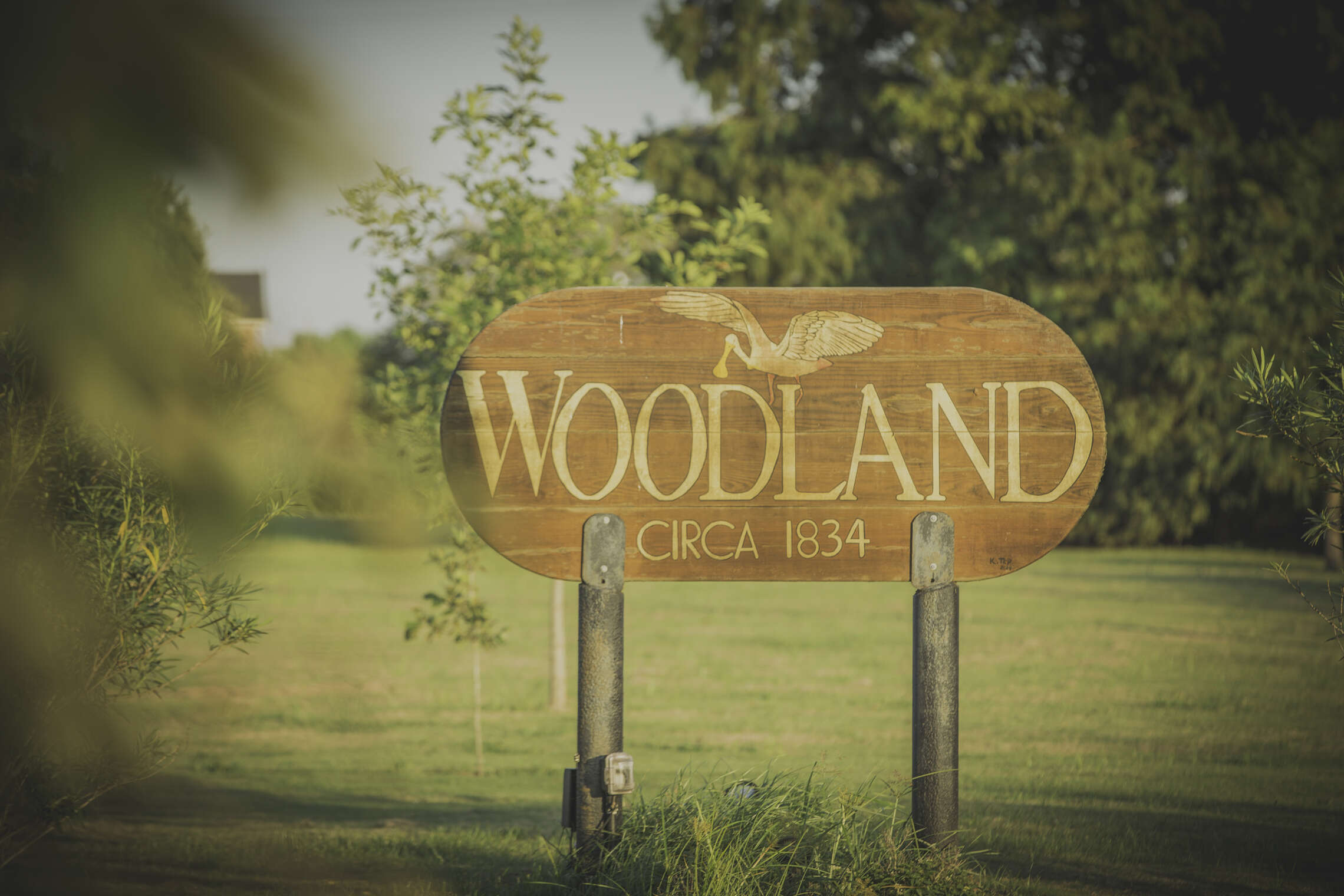
Sample Itinerary
DAY 1
Travel to New Orleans (Exact Flight Itinerary TBD)
Arrive New Orleans (MSY) before 5:00PM on commercial flight.
CALL YOUR FISHING GUIDE UPON ARRIVAL IN NEW ORLEANS
You must call your fishing guide the afternoon prior to your fishing day. This will allow you to coordinate the
meeting time the following morning (usually around 6:00-7:00AM depending upon the time of year). We will
provide you with all guides’ phone numbers on your detailed personalized itinerary.
IF YOU RENTED A CAR
Once you have collected your luggage at the baggage claim area, you will want to walk outside the baggage claim
area and head to the right. At the end of the baggage claim area you will walk outside where you should easily
find shuttle buses that run every few minutes delivering travelers to the rental car pickup building where you will
check-in before heading up some escalators to the 2nd or 3rd floor to find your vehicle.
The pickup procedure is very simple. We have provided you with driving directions and a map to the Woodland
Plantation enclosed. However, it is a good idea to ask the rental car company representative for directions out of
the airport and onto Interstate 10 Eastbound.
IF YOU HAVE A PRIVATE DRIVER
Simply look for your driver holding a sign or an iPad with your party’s name on it at the bottom of the
escalator before you get to the baggage claim. He will escort you immediately to the vehicle and begin the
drive to the Woodland Plantation.
Note on Gratuities for Driver: Your driver has normally already been paid in full, however we recommend
a $20-$40 gratuity each way for your driver if he or she provided quick and safe service.
Note on Late Arrival Times at the Woodland: If you and your party are delayed, or for any other reason
anticipate not arriving at the Woodland Plantation until after 7:30PM, please call the Plantation and alert them to
your estimated arrival time. This will allow them to organize your dinner service accordingly.
CHECKING IN AT THE WOODLAND PLANTATION
Upon arrival at the Woodland Plantation, you will want to park your car and walk into the side entrance of Spirit’s
Hall adjacent to the main drive. Spirit’s Hall is the renovated church (you cannot miss the stained glass windows)
on your left as you pull into the drive. You will check in, get your keys to your room, clean up, and head into the
main dining room for appetizers, cocktails, and dinner, usually served around 7:30PM. We recommend you string
up your fishing rods the night before and get your gear ready for the fishing day tomorrow morning!
Fishing Days
A made to order breakfast is served in Spirit’s Hall usually starting around 6:00AM. There are coffee makers inside the common areas of each guest house if you are an early riser and would like to start a pot of coffee. While you are finishing up breakfast, your guides will arrive and begin prepping boats and gear. Your bagged lunches will be placed in the dining room. Don’t forget to take your sack lunch with you and give it to your guide to be placed in the boat cooler.
Depending on conditions, guides usually drive ten minutes south of the Woodland to a private boat launch in Port Sulphur. Guides may drive as far south as Empire or Venice, or take the ferry at West Point a la Hache to the marsh on the east side of the river. From the launch, anglers run anywhere from ten minutes to over one hour to begin fishing.
Lunch is taken in the boat. The fishing day is usually 8-9 hours long and anglers are typically back at the Woodland Plantation between 4:00-5:00PM.
IF YOU ARE TRAVELING HOME THE SAME DAY AS YOUR LAST FISHING DAY
We suggest you allow at least three hours between your departure from the Woodland Plantation and your scheduled commercial flight time. If you are allowing us to organize your driver back to the airport, we will coordinate your pickup time accordingly. If you are driving a rental car, make sure you allow for possible traffic in New Orleans as well as an additional twenty minutes to return your rental vehicle. Remember, if you are planning on fishing a full day, we suggest you do not book any commercial flights prior to 7:30-8:00PM.
CHECKING OUT OF THE WOODLAND ON YOUR LAST FISHING DAY (IMPORTANT)
Make sure to coordinate your checkout procedures the night before departure. Anglers are always in a hurry to make it back to the airport following a full day of fishing. Invariably, guests forget to settle up for the bar tab and house gratuities. You should also have your bags packed and out of your room preceding departure for fishing the last morning. Depending on the number of guests arriving that day, you may not have the ability to take a shower before heading home. Again, communicate with the team at Woodland the night before on all of these issues and they we will do their best to accommodate you.
Departure Day
Check out of the Woodland Plantation and return to New Orleans for your flight home. Make sure to settle up for the bar tab and distribute gratuities for the house staff. Refer to your personalized itinerary for your exact scheduled pickup time with your private driver. If you are driving a rental car, please allow at least three hours between your departure from the Woodland and your scheduled commercial flight home. There may be traffic in New Orleans and it takes approximately twenty or thirty minutes to return your rental car.
Depart New Orleans (MSY) on evening flight home after 7:30-8:00PM.
(Exact Flight Itinerary TBD)
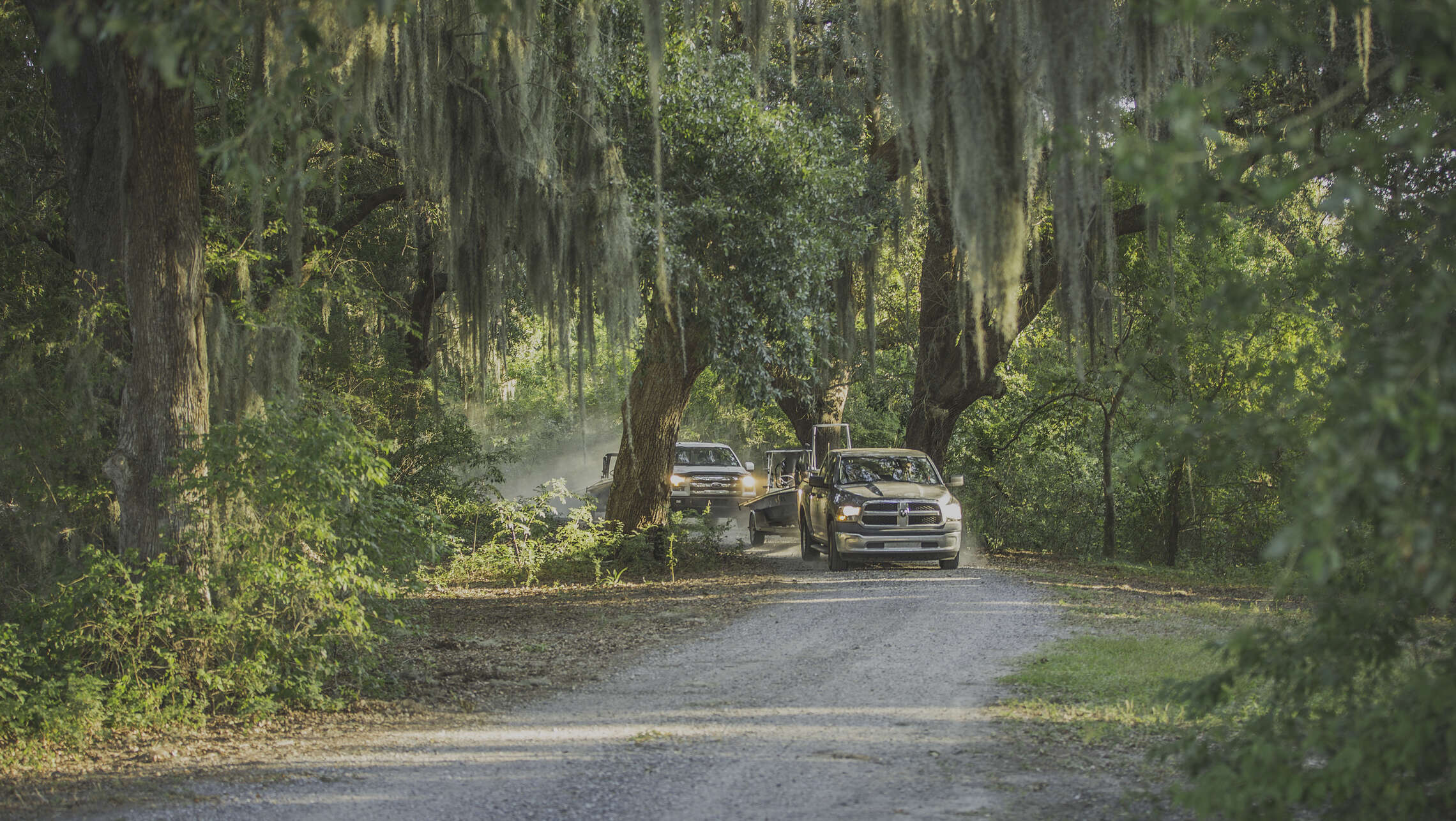
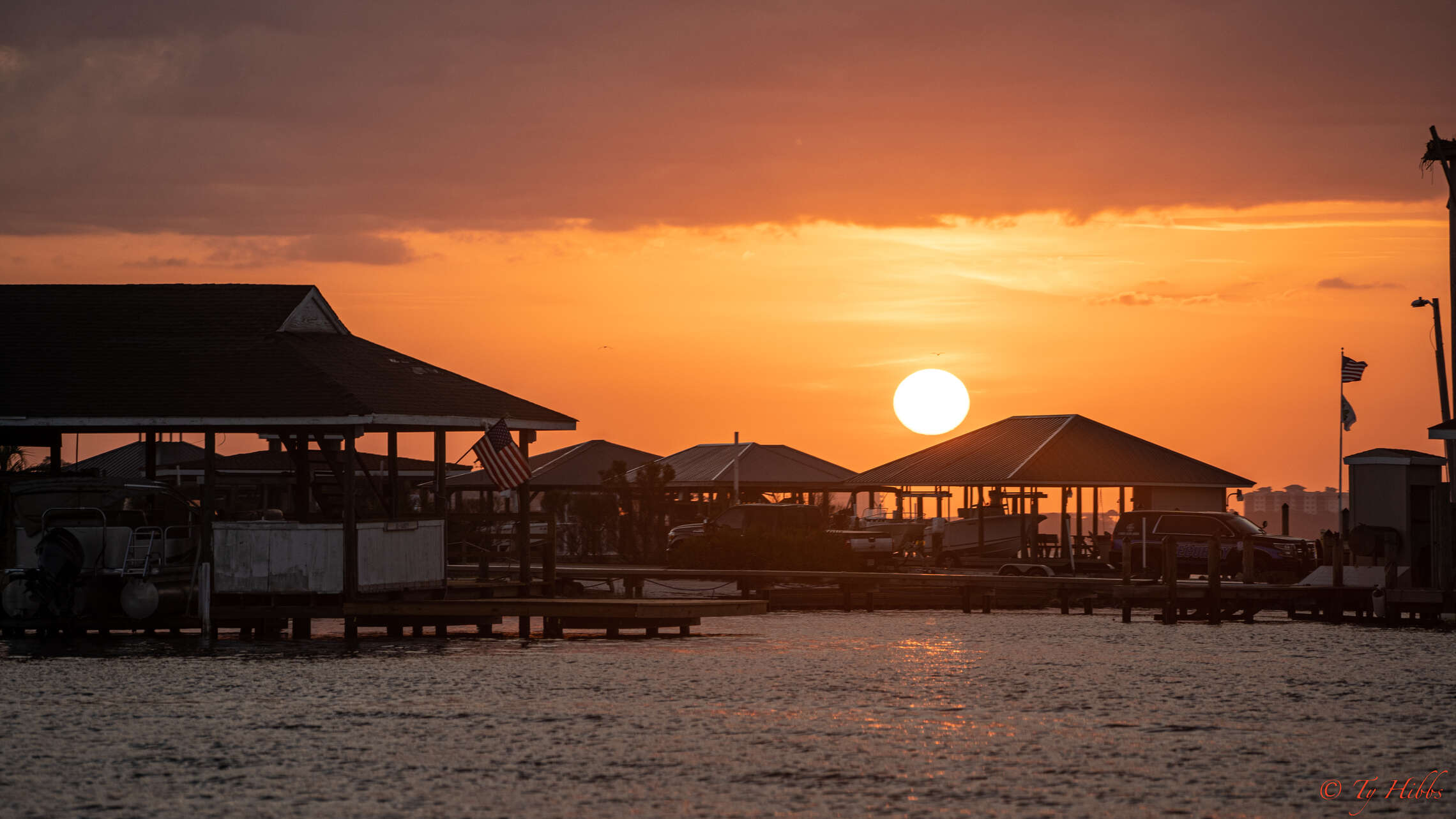
LODGING & FISHING overview
GRATUITIES
Tipping is a personal decision based on good service and is completely at your discretion. The following recommendations are simply for your understanding of what the expected tip is for a satisfied guest. Feel free to
tip a bit more if you are very impressed with a particular guide. Many clients will happily offer a larger gratuity
to guides who help them catch a special trophy fish or work hard through difficult conditions. All tips should be
given in cash.
FLY FISHING GUIDE GRATUITIES
We recommend around approximately $100-$120 per boat/per day ($50-$60 per person/per day when sharing
a guide). If you are fishing solo you should plan on $100-$120. Gratuities to guides may be distributed any way
you prefer. If you are planning on switching guides throughout your trip, we recommend giving a tip directly to
your guide at the conclusion each fishing day. If you are planning on fishing with one guide for your entire stay, we
recommend simply waiting till the conclusion of your last day of fishing.
SPIN FISHING GUIDE GRATUITIES
We recommend similar tips for spin boat charter captains, however also suggest you add an additional $50-$60
per person for a 3rd or 4th angler. » 1-2 Anglers: $100-$120 » 3 Anglers: $150-$180 » 4 Anglers: $200 - $240
WOODLAND PLANTATION STAFF GRATUITIES
We recommended $10-$15 per room/per night for the house staff payable at the conclusion of the trip when you check out. You should give your staff gratuity to the owner, Foster Crepple, or the manager on duty when you are settling up for any extra expenses such as your bar tab. This tip will be dispersed to the cooks, maids, waiters, and support staff on your behalf. Also feel free to give additional gratuity to any individual around the house you were particularly impressed with. In addition to the house staff gratuity, we recommend a standard 15-20% Gratuity on your bar tab for
your waiters and waitresses.
AIRPORT AND GROUND TRANSFER GRATUITIES
We recommend a gratuity of $15-$25 per person for your drivers (if applicable) as well as baggage porters at the
New Orleans airport ($1-$2 per bag).
EXTRA EXPENSES & CHECKOUT FROM THE WOODLAND PLANTATION
At the end of your stay, you may pay your bar tab with cash or credit card. The Woodland accepts VISA, MasterCard
& American Express. We recommend a standard 15-20% Gratuity on your bar tab for your waiters and waitresses.
LIQUOR & BAR TAB
The Woodland Plantation bar is well stocked with every liquor imaginable and numerous wines in the cellar. Liquor, beer and drink setups are not included in your package price. Individual tabs are kept, and you can check on your tab at any time during your stay. Again, we recommend a standard 15-20% Gratuity on your bar tab for your waiters and waitresses.
BOAT REFRESHMENTS & LUNCH
Your guides are responsible for stocking the cooler and providing cold water and some sodas. Anglers are welcome to buy beer at Woodland or stop at the grocery or convenience store with the guide in route to the boat launch. The Woodland Plantation provides lunches for anglers and their guide. Your bag lunches will be set in the dining
room during breakfast. Anglers are responsible for picking up lunch and taking it to your guide to put in the boat’s cooler. Don’t forget your lunch sacks!
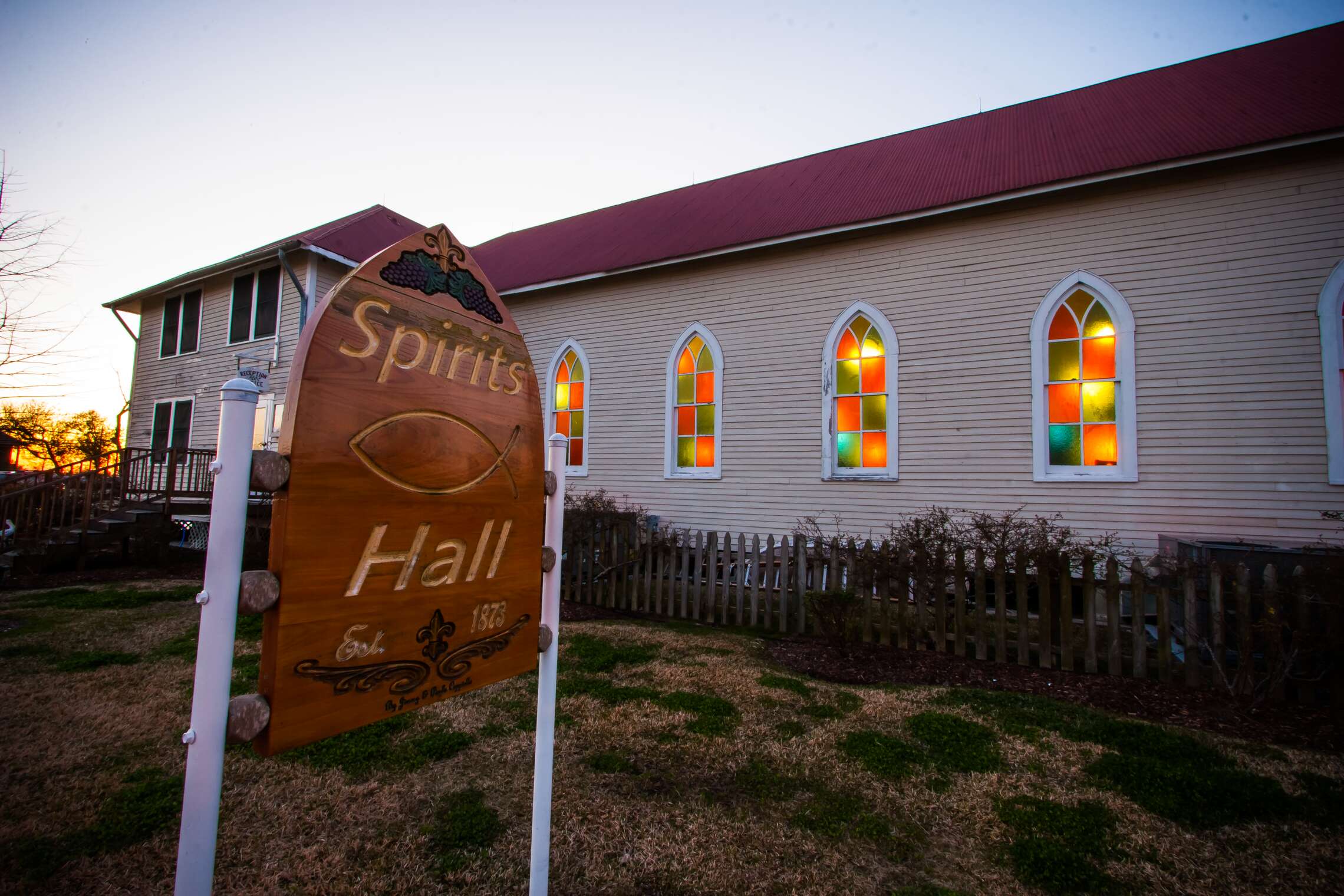
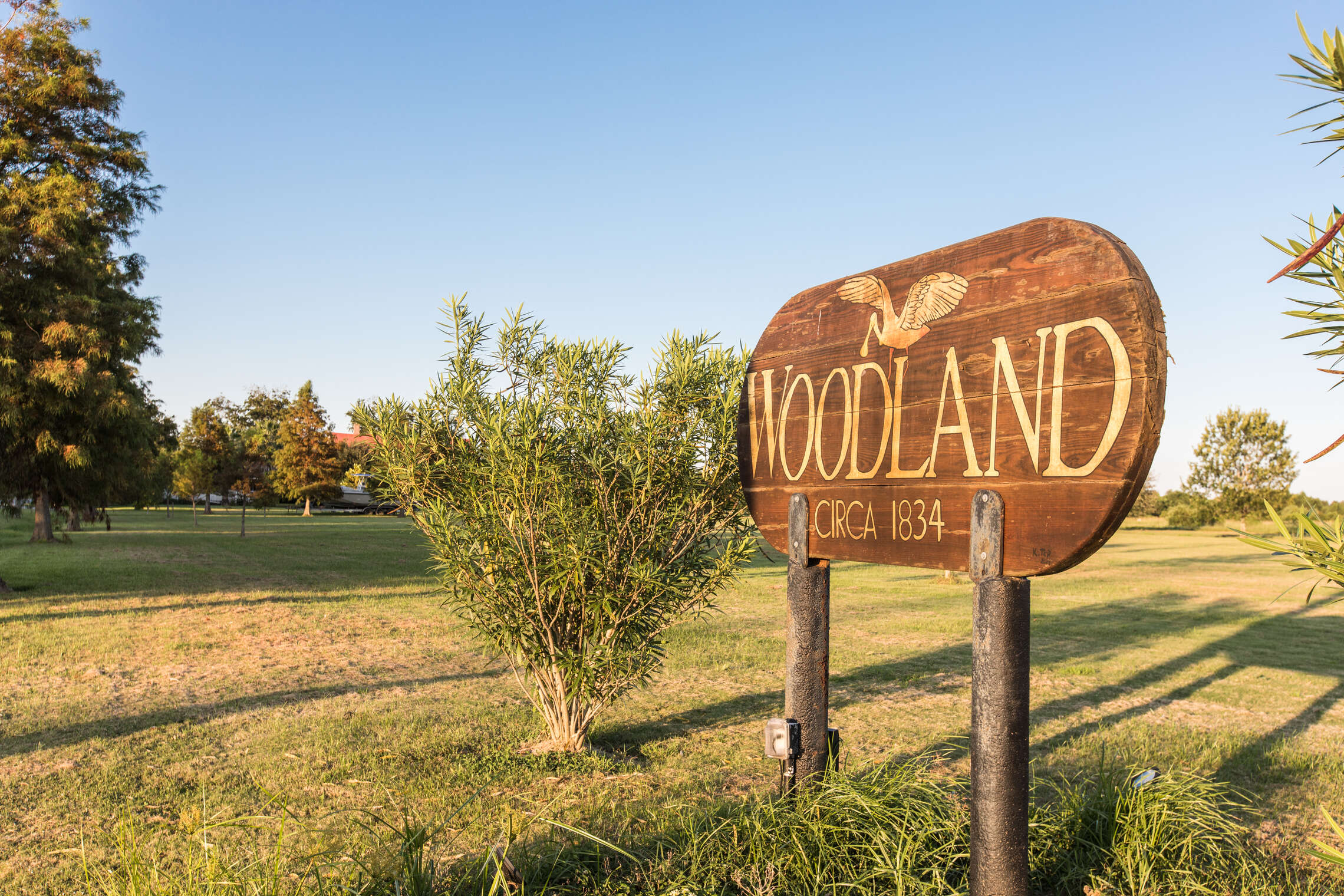
WEATHER FORECASTS
We like Weather Underground and Accuweather for our online weather forecasts. Make sure to search predictions
for Port Sulphur or Venice, LA before heading down to the marsh. The best resource for following the marine
weather forecast for Plaquemines Parish and the areas fished are at the following links: Weather Underground , NWS
INSECT REPELLENT
Unfortunately, the areas around the Woodland Plantation are home to mosquitoes... particularly in the evening.
Surprisingly, there are no mosquitoes in the marsh. However, during the fall and winter months swarms of tiny gnats can be a huge annoyance. Bring some bug repellent.
FISHING HOURS
An average fishing day on the marsh is around eight-nine hours long. Depending on the time of year and conditions,
guides usually pick up clients at the Woodland at around 6:30AM or earlier. Anglers are usually off the water by
4:00PM and back at the Woodland around 5:00PM at the latest.
BORROWING FISHING EQUIPMENT
The Woodland Plantation does not provide any fishing gear for guests. With enough advance notice our guides
can provide fly rods and reels as well as spinning gear if required at no additional charge.
Equipment List
MANDATORY ITEMS
QUICK NOTES ABOUT GEAR & TACKLE
NOTE ON LOANER RODS & REELS
Although we encourage our clients to bring their own rods and Reels, our guides can provide anglers with both fly-fishing and spinning outfits free of charge. Please give us plenty of advanced notice if you intend to borrow any gear from our guides.
FLY RODS
We recommend multi-piece travel rods in the four and five piece models for all travel with commercial airline carriers. Fly rods for all saltwater applications should be fast action models with fighting butts capable of handling windy conditions and delivering heavier flies. Remember, most presentations are in the 10-40’ range, you have a rod that makes short casts accurately is equally as important as having loads of power. We also always recommend bringing a backup rod in case of breakage.
SPRING & SUMMER RODS FOR REDFISH
A nine-foot, eight-weight rod is the standard universal redfish rod used by the vast majority of all anglers during the spring and summer months. Fish are typically in the 5-15 pound range, and an eight weight is usually enough to handle fish during these months. You want a rod that has enough fortitude to deliver the fly in windy conditions. However, the ideal redfish rod also has enough feel in the tip section to allow for more delicate and accurate presentations at very close casting ranges.
FALL & WINTER RODS FOR REDFISH
Starting in late fall, the big bull reds begin moving into the marsh. As the weather gets cooler anglers will have more and more opportunity for redfish in the twenty or even thirty-pound range. Although an eight weight can get the job done in many circumstances, we encourage anglers to consider a nine or ten weight rod to handle these bigger fish properly. It is also important to note that many bull reds usually travel in pairs or small groups. Having a heavier rod will allow you to land the big boys quickly and get back in the water for another one!
FLY RODS FOR OTHER SPECIES IN THE MARSH
It is never a bad idea to have a 10 weight handy year round for big black drum and the prospects of finding schools of hard fighting Jack Crevalle.
TACKLE FOR THE NEARSHORE PROGRAM
If you are planning on going out in a bay boat fly fishing on the beaches and the rigs, we recommend a 10-12 weight with a floating line as well as a heavy sinking line. Certain species like Cobia can be good fun on a 9-10 weight and a floating line, while other species like jacks, tarpon, mahi-mahi, amberjack and sharks often require a sinking line for the best chances at success. Most guides have this equipment for guests, but please inquire for more details.
REELS
Reels should be anodized corrosion-resistant saltwater models that will hold a full fly line plus the appropriate amount backing. Reels equipped with high quality, smooth, drags are essential to prevent break-offs from the
powerful runs of a hooked redfish. We cannot stress enough the importance of acquiring a reel with a high quality drag.
FLY LINES
100% of all redfish applications require a standard weight forward floating line, so do not bother with bringing any sort of sinking lines. We suggest the Redfish taper lines by Scientific Anglers or Rio. Nearly all presentations are at very short distances, so anglers want a heavy front tapered fly line for a little more assistance turning over heavier flies in windier conditions. Fly lines can easily break on debris or oyster beds so make sure to bring additional floating lines as backup.
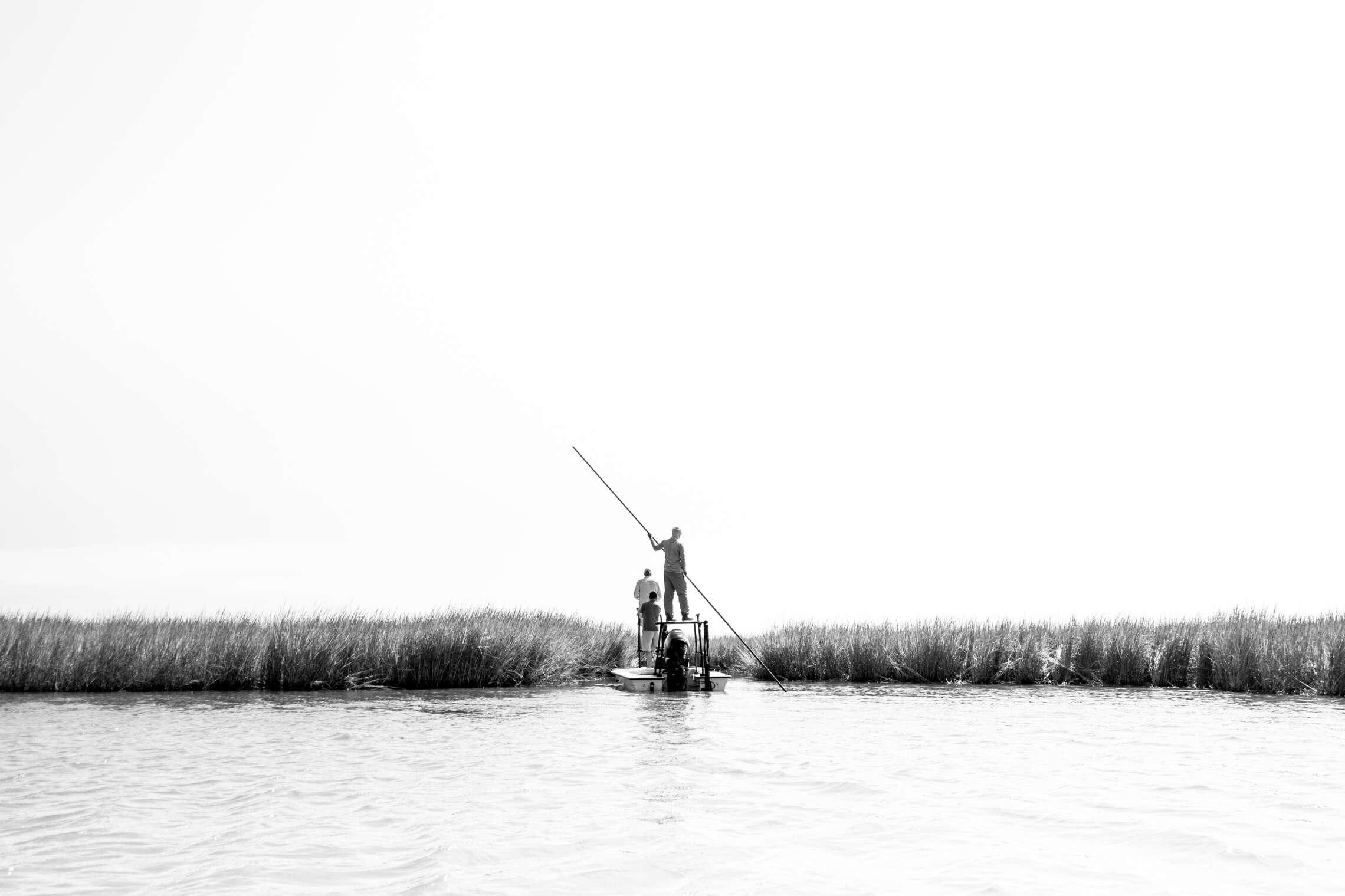
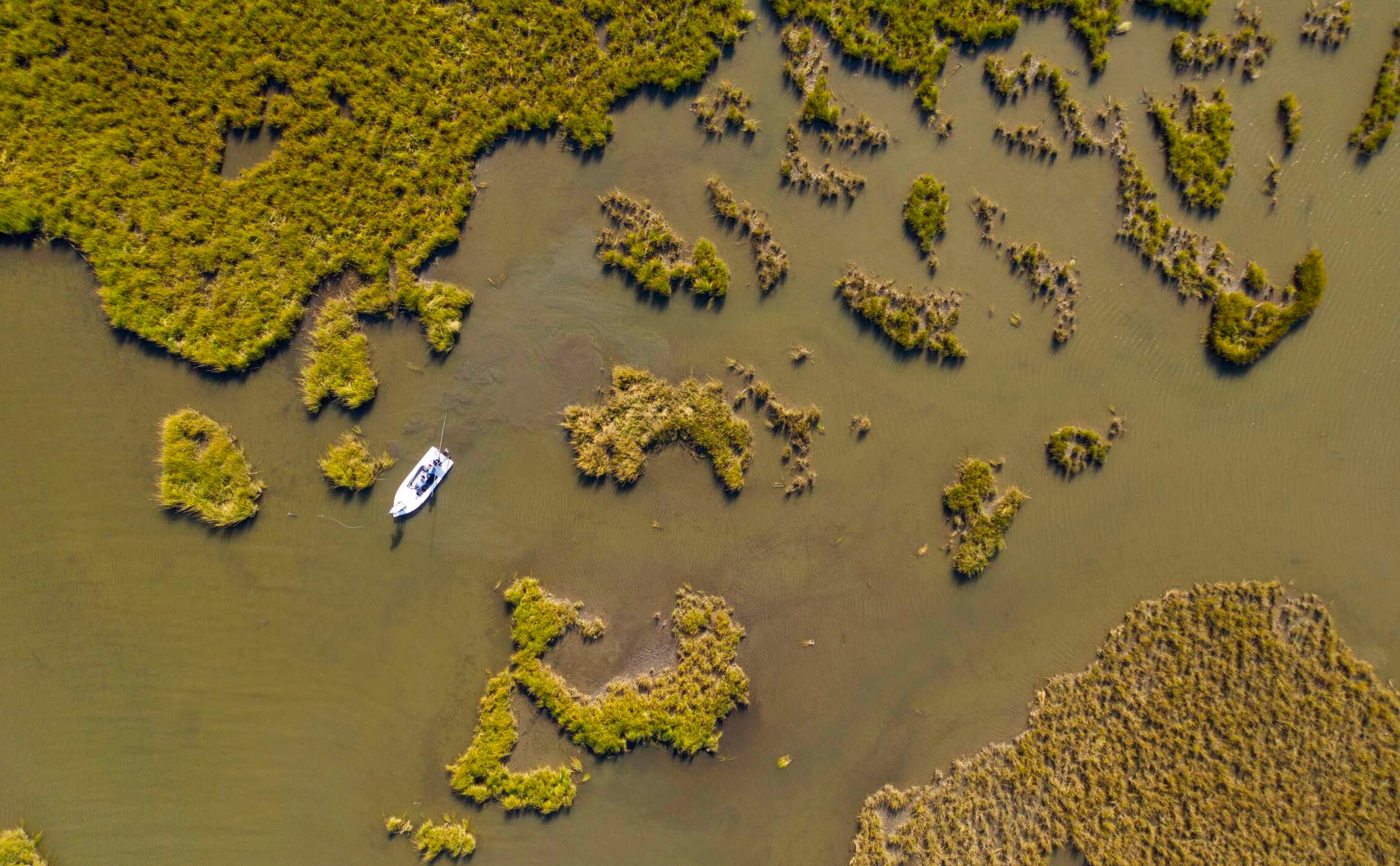


Equipment & Accessories
CLIMATE AND GENERAL CLOTHING
When packing, keep in mind the social atmosphere at the Woodland Plantation is extremely casual. Fishing clothing, t-shirts, sandals, etc. are always acceptable at the dinner table. Other than your fishing related clothing, a couple of t-shirts, and a pair of casual shorts or pants, we recommend only one set of street clothes for travel days. Generally speaking, the southern Louisiana marsh has a very mild climate most of the year. However, if you are fishing in the autumn or winter months you should be prepared with cold weather gear. Make sure to check the weather forecast prior to packing and of course ask us for details if you have any questions about what to pack.
WINTER FISHING (DECEMBER 1 - MARCH 1)
Be prepared for cold weather! Make sure to have long pants, fleece jackets and/or vests, rain jacket, long underwear, a warm hat, and proper gloves. Temperatures can easily drop below freezing in the winter, and early morning boat runs can be frigid. Although you should also be prepared for milder conditions, you can never have too many clothes during the winter months. Dress in layers to accommodate changes in weather as well.
SPRING FISHING (MARCH 1 - MAY 15)
You can expect a combination of cooler days and milder days during the spring months. Typically, anglers experience cooler mornings that dictate a jacket and long pants in the morning followed by warmer conditions as the sun comes up. Be prepared with layered clothing to shed and put back on accordingly.
SUMMER FISHING (MAY 15 - SEPTEMBER 30)
The key to staying comfortable on the marsh in the summertime is to remain cool while protecting yourself from the sun. Lightweight clothing with plenty of ventilation is recommended. Odds are you will probably get wet when running in the boat or during a rain shower. You want your fishing clothing to shed water and dry quickly in the humid air.
FALL FISHING (OCTOBER 1 - DECEMBER)
Fishing in the early fall (September - mid October) can still be quite warm. Similar to the springtime fishing, come prepared for both cooler and warmer weather. By November 1st we recommend you bring some warmer jackets and expect to wear long pants almost every day. When the first major cold fronts arrive in November temperatures can plummet quickly from day to day. Be prepared for both mild and cold weather fishing as anything could happen with your forecast.
LUGGAGE
We recommend roller style, soft-sided duffel bags for nearly all our travels. Ideally you have a bag that adheres to airline size restrictions but it still large enough to fit a couple of rod tubes, tackle, boots and other gear. If you have a particularly large bag, we advise you to communicate with your commercial carrier as well as the TSA regarding any baggage weight restrictions that might be applicable. We carry many excellent sets of luggage by Patagonia, Simms, and Fishpond. These bags are the ideal size, bulletproof, and are equipped with efficient roller systems. Some models also have separate compartments for storing wet boots and/or waders or even rod tubes. Don’t forget to mark your luggage with appropriate personal identification bag tags.
*** THERE ARE NO WADING OPPORTUNITIES ON THE MARSH. YOU WILL NOT NEED ANY WADING BOOTS OR A HIP PACK.
LIGHTWEIGHT SHIRTS (LATE SPRING & SUMMER)
Fishing should be cool and dry quickly, have breathable flaps that allow air to circulate through, and should be easy to pack and maintenance-free. Patagonia, Simms, Free-Fly, Flood Tide, and Howler Brothers make several different models and styles both in short and long sleeves. If the sun bothers you, we recommend the long sleeved
versions, especially in late spring and early summer. Proper fishing shirts also should be equipped with chest pockets for storing small items like tippet material or a cleaning cloth for sunglasses and camera lenses.
SHORTS (LATE SPRING & SUMMER)
Fishing shorts should also be made of a synthetic quick dry material. We suggest shorts with pockets and belt loops for accommodating pliers. Patagonia, Howler Bros, Free-Fly and Simms make excellent models.
LONG UNDERWEAR (COOLER MONTHS)
Long underwear serves as your base layer of clothing throughout the winter season. You will want multiple pairs of both tops and bottoms to rotate throughout the week. Patagonia Capilene is a favorite synthetic long underwear in both short and long sleeved models. The light and mid-weight models are used most on the average autumn or winter trip, however plan on having a few varieties of weights according to various temperatures. Simms also makes some wonderful woolen and synthetic base layers as well.
INSULATING THERMAL LAYER (COOLER MONTHS)
Fleece jackets, vests, pullovers, soft shells, and pile jackets are your second major layer of clothing for both your upper and lower body during the winter. Again, wear synthetic materials rather than wool or cotton as they are lightweight, dry quickly, and wick moisture away from your body. Simms, Howler Bros, and Patagonia produce a variety of styles, weights, and colors.
LONG PANTS
Sun protection, rather than warmth, is the primary function of long pants when fishing on the marsh during the late spring and summer. Patagonia and Simms make great pants and shorts specifically designed for fishing. They will protect you from the
sun, are wind resistant, and dry quickly. Some pants have removable pant legs that zip off to become shorts. Most styles of pants are also suitable for wearing at the lodge or on your travel days. If your
trip is in the winter, you will want some insulated pants that are wind and water-resistant.
BOAT SHOES
When it is hot, many anglers prefer to simply go barefooted. However, many anglers also enjoy wearing comfortable sandals or rubber-soled shoes for more traction and/or sun protection. During the cooler months, you definitely want some shoes that will accommodate warm socks and are water
resistant.
RAIN GEAR
A high quality, lightweight rain jacket is another essential piece of clothing while in the marsh 12 months a year. Patagonia, Grundens and Simms all make great lightweight jackets that will keep you dry
during tropical rainstorms or while crossing choppy water in the flats boat, and help block the wind.
POLARIZED SUNGLASSES
This is your most important piece of equipment for all sight fishing. Without the ability to see the fish you are stalking, you put yourself at a great disadvantage.
Copper and Brown lenses are the best choice for this type of fishing. Yellow lenses are great for mornings, late afternoons, and cloudy conditions. Always bring
two pair of polarized sunglasses in case you loose or break a pair. Smith and Costa make a variety of stylish frames to choose from. We can special order bifocal or trifocal lenses for many of these frames
with enough advanced notice. A lanyard or “croakie” is also invaluable in order to keep from dropping or losing your glasses.
HAT
Bring two hats or caps for sun protection. If you are sensitive to the sun, make sure to bring a hat that covers your head as thoroughly as possible. Hats that have dark colors underneath the brim help to reduce glare from the water aiding in spotting fish.
Bring an insulated hat during the winter months.
SUN PROTECTION
The Louisiana sun is very intense even on cloudy days. Pack some sun block and lip balm with a minimum of 30SPF. Head / face tubes by BUFF or Blackstrap are a must have for most anglers. It is a comfortable, lightweight and breathable garment that functions similar to a bandanna and will keep
UV rays off of your head, neck, and ears. We carry several styles and models.
BOAT BAGS
A boat bag is important for carrying your tackle and gear with you on the boat each day. Running in the boats over open water oftentimes sprays saltwater mist into the boat, so you should have some type of
waterproof or water resistant bag with you in the boat for storing cameras, lenses, tackle, flies, extra reels, spools, sunscreen, rain jackets, spare reel parts, bottled water, snacks, or anything else you don’t want to carry on you while fishing. Patagonia
makes a wonderful 99% waterproof bag called the Great Divider. It is also the exact dimensions of the under seat storage area on an airplane. We often use the Great Divider as our carry on luggage. Simms and Fishpond make very comparable product in
several sizes as well. Everything stays dry, salt free, and out of the humidity.
SUNGLOVES / FINGER GUARDS
Sungloves made by Patagonia, Buff, Blackstrap or Simms are great for protecting your hands from the sun. We also recommend finger guards for protecting
your fingers if you are not keen to wearing gloves.
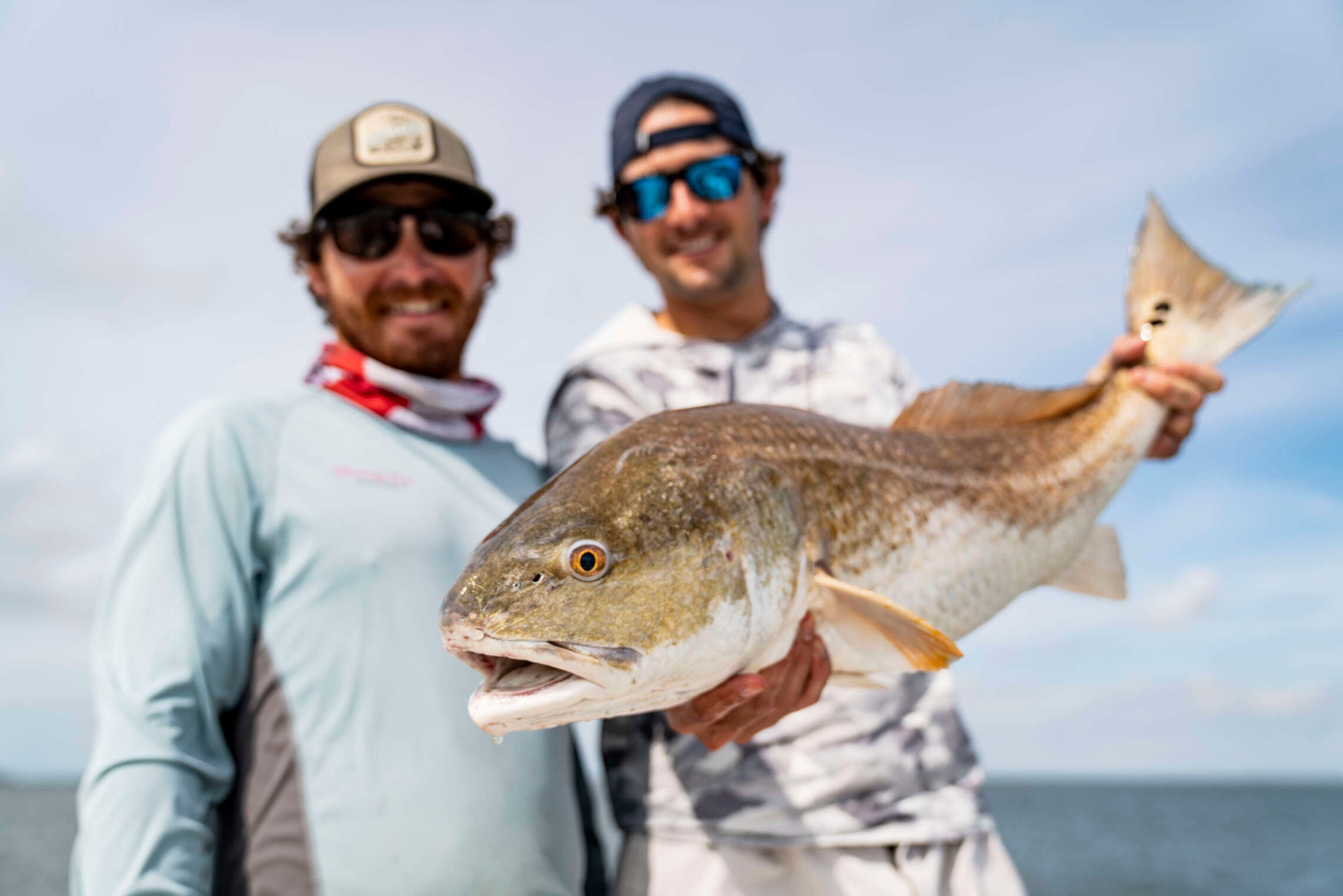
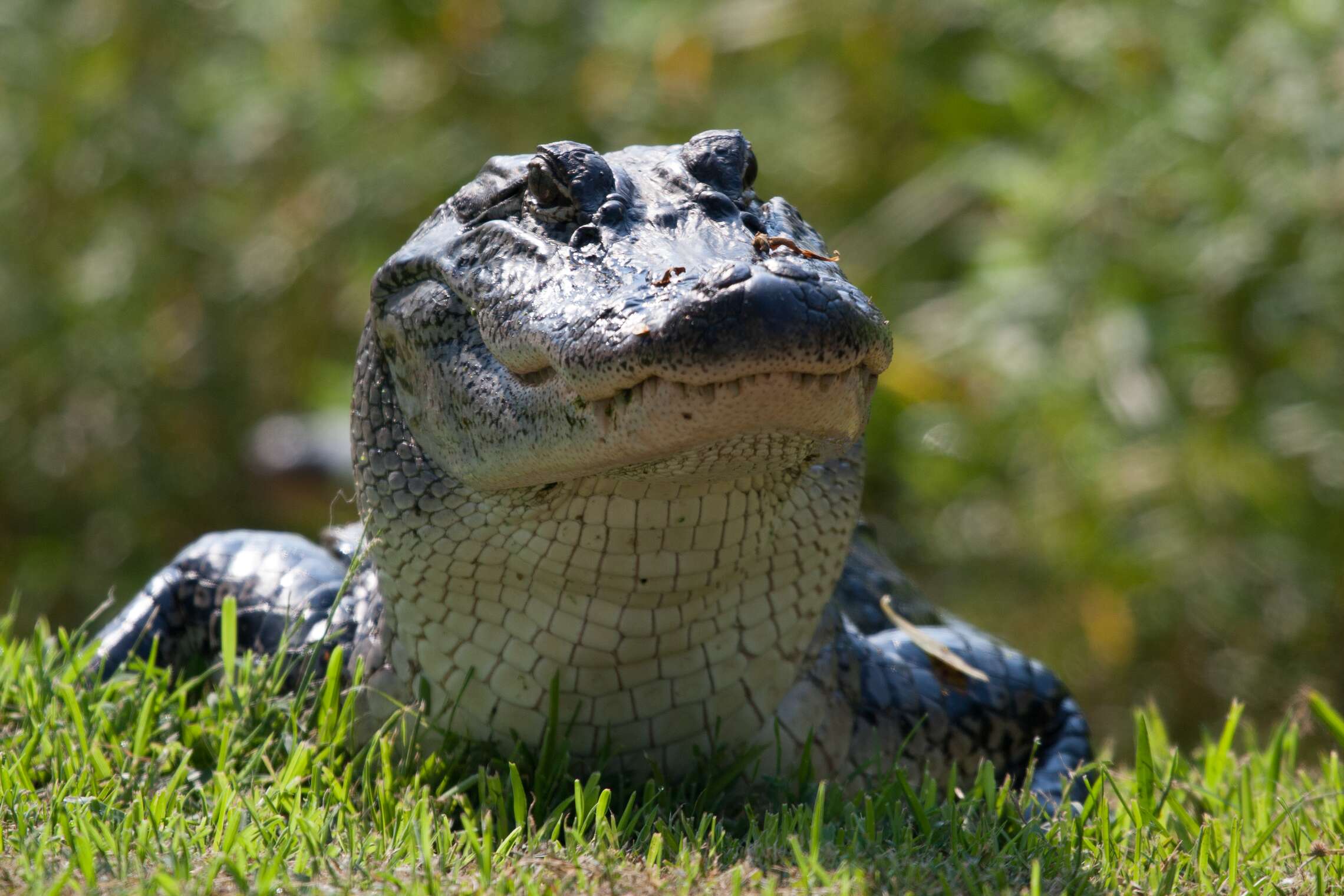

PLIERS & BELT
Although your guide should be equipped with pliers, we recommend a quality pair of corrosion resistant pliers as an essential tool when fishing the saltwater...especially for big game. Pliers by Hatch, Abel, or Van Staal aid in hook removal, cutting heavy monofilament, and tying big game knots. All pliers should be kept in a sheath and have a check-chord to avoid dropping them overboard. Don’t forget to bring a synthetic belt to be worn in order to accommodate your pliers’ sheath.
INSECT REPELLENT
Unfortunately, the areas around the Woodland are home to mosquitoes... particularly in the evening. Surprisingly,
there are no mosquitoes in the marsh. However, during the fall and winter months swarms of tiny gnats can be a huge annoyance! We carry a number of great sun and bug products at the shop.
TOOLS & GADGETS
Items like nippers, hemostats, and hook hones are necessities in every fishing pack. The tools can be kept on a retractor or on a lanyard. A Leatherman multi-tool is also a nice extra to have in the boat bag.
LENS CLOTH
It seems like glasses are always getting wet when landing unruly fish or on boat runs. This can be quite frustrating if you are not prepared with a quality lens cleaning / drying cloth. Consider taking one of Smith’s Lens Cleaning Kits or something comparable to wipe salty film and sweat off of your glasses.
Tip: Always grab some toilet paper, kleenex, or a napkin and store it in a shirt pocket within an empty leader package to keep it dry. The freshwater in the cooler is always a good spot to rinse your lenses as well.
TRASH BAGS & ZIPLOCS
Always thrown in a couple of small trash bags in your bag for packing wet wading shoes for the trip home in order to keep mildew from spreading through your clothing. Having some Ziploc baggies on hand are also a good idea for keeping camera equipment or papers dry in your boat bag.
FIRST AID KIT
A simple first aid kit with Band-Aids, alcohol wipes, waterproof tape, and Dramamine for motion sickness is always a good thing to have on hand.
FLASHLIGHT OR HEADLAMP
A flashlight can be an invaluable item to have when making the trek to the bathroom in the middle of the night or taking a stroll after dinner. Our favorite is the Petzl headlamp. Headlamps are great for reading at night while your roommate is sleeping, and free up your hands to get organized in the dark.
ROD CARRIER
Remember, we encourage our clients to check all of their fishing tackle and gear. However, for anglers who insist on carrying on rods should strongly consider investing in multi-piece rods (4-piece) that will fit in a quality rod carrier. This makes it simple to consolidate all of your rods into one case and is less alarming to airport security. Our favorite is the Fishpond 4-piece carrier called the Dakota Bag. It holds numerous rods as well as room for reels and other carry-on approved tackle. Winston and Simms make quality products as well.
REDFISH FLIES // FLIES NEEDED TO HAVE SUCCESS WITH REDFISH FLIES
Remember, all flies and leader material are provided free of charge by our guides. There is no need to bring any flies with you unless you want to fish your own patterns. Southern Louisiana Redfish are not very picky when it comes to fly selection. They feed on various kinds of baitfish, mullet, large crabs, shrimp, and any other easy meal that comes in their path. You will want a selection of both heavily weighted flies as well as lighter flies as well. For the most part, you can use heavy flies without fear of spooking fish. Just have a nice cross section of clousers, toads, spoon flies, spawning shrimp, and two-tone crab patterns.
LEADERS & TIPPET MATERIAL
Louisiana Redfish are NOT leader shy. You should be equipped with a minimum of 15-20 pound leaders. Most guides will fish twenty (20) pound test leaders under normal circumstances. Leaders are typically 10’. We also always recommend using fluorocarbon tippet material as it is stronger and more abrasion resistant.
Leader Recommendations: 9’ - 15-20lb Fluorocarbon
Tippet Recommendations (1 Spool of Each - Fluorocarbon): 15lb & 20lb
Communication Information
CONTACTING HOME/GUESTS
Friends, family, and business associates are of course welcome to contact guests at the Woodland at the numbers
below.
CELLULAR PHONES
Cell phones will work well at the Woodland Plantation, and often work in many of the areas fished.
INTERNET / EMAIL ACCESS
The Woodland Plantation does have internet access on the computer in the lobby of Spirits Hall. Simply ask management or one of the girls to log you on. There is a wireless connection in Spirits Hall, but in our experience is not easy to log onto. There is no internet access inside the Big House, Little House, Magnolia Store, Overseer’s House, or any of the condos.
WOODLAND PLANTATION
21997 Highway 23
West Point a La Hache, LA 70083
Foster Creppel (owner): (800) 231-1514 or (504) 656-9990
GROUND TRANSPORTATION SERVICES
Deltran, LLC
Darin LeCount
(601) 513-7800
LIMOLIVERY
Phone: (504) 561-8777
TAILWATERS FLY FISHING COMPANY
TRAVEL DEPARTMENT DIRECTOR:
David Leake
1933 E. Levee St.
Dallas, TX 75207
TELEPHONE: (888) 824-5420 or (214) 219-2500
FAX: (214) 219-2501
EMAIL: travel@tailwatersflyfishing.com or david@tailwatersflyfishing.com








